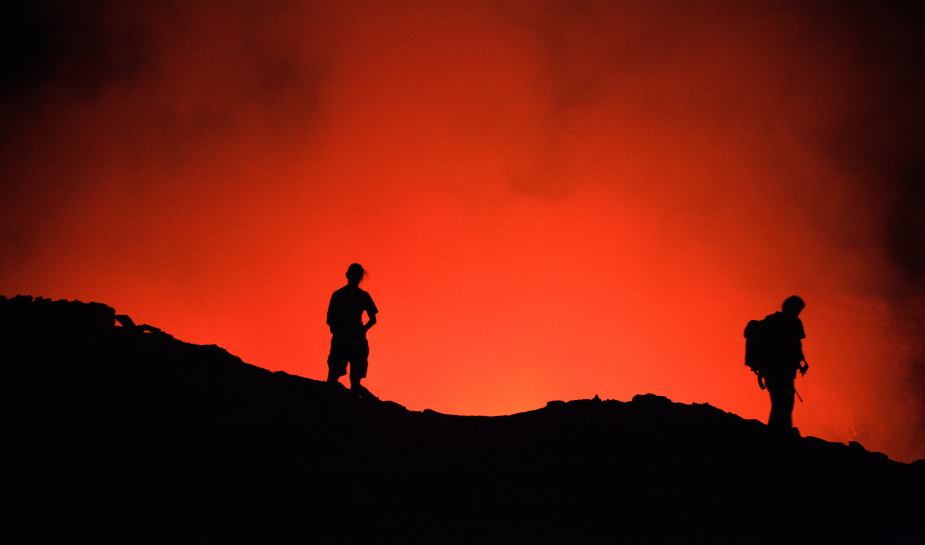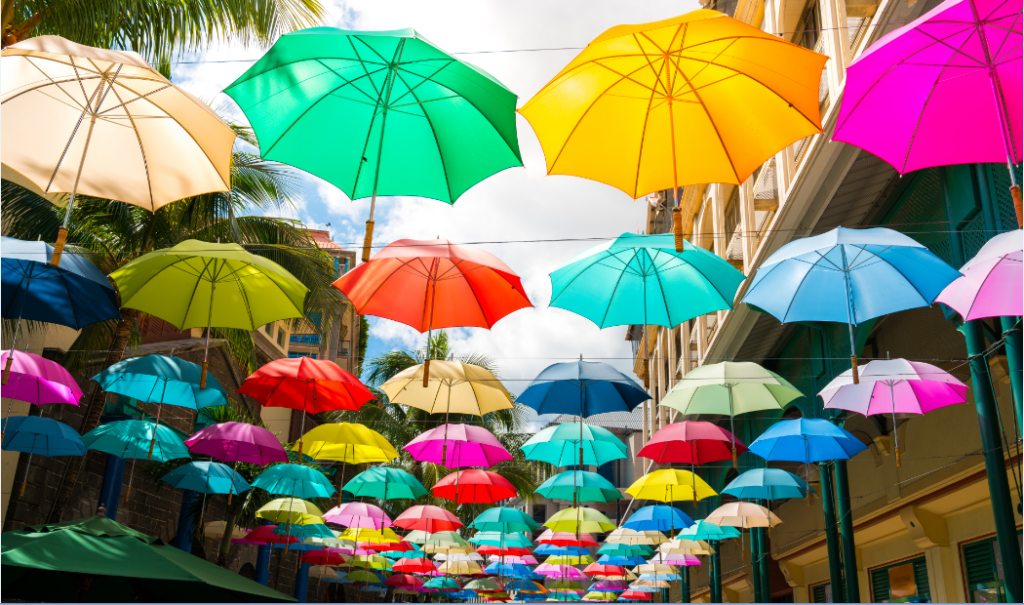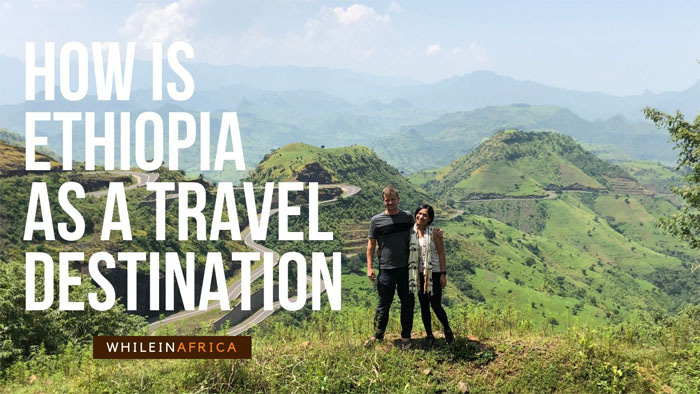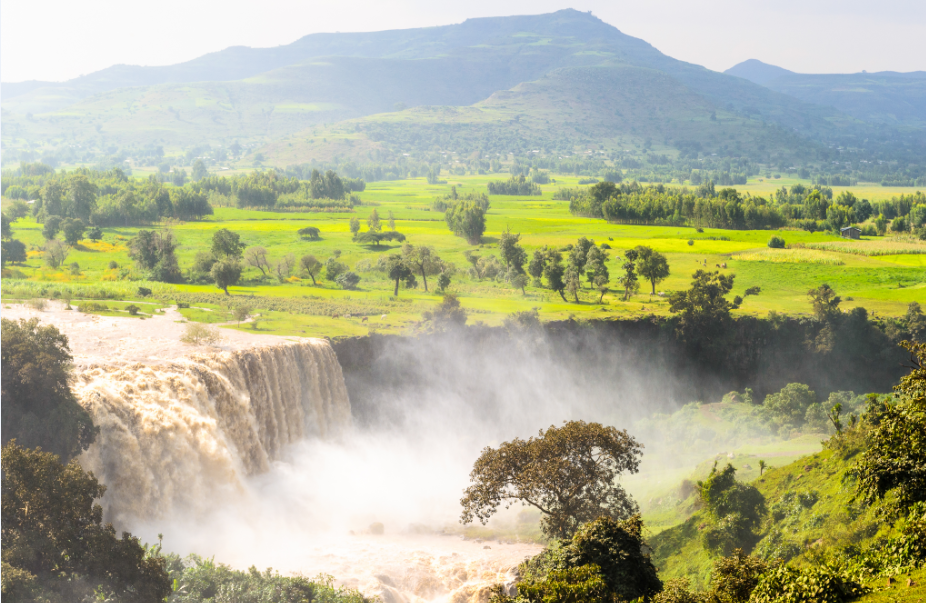Seeking out color could help enrich your sensory experiences
Whether or not you realize it, color is a huge part of your psychological makeup. As humans, we have emotional reactions to the crackling oranges and reds of a roaring fire on a ski trip, or to the still blues of the sea—color can make us feel calmer, angrier, or more energized. It also provides important cues about our surroundings: Even in a new city, the red of a stop sign tells us to stop; the pigment of a fruit can inform us as to whether or not it’s ripe.
“We constantly have neurons firing off when we see different colors,” says Jill Morton, director of the International Color Research Institute, based in Honolulu, Hawaii.
And travel provides a unique way to look at color, too—a break from places you’re so used to seeing that you might, by now, overlook. In many ways, color could also be considered an entry point to travel. In a new environment, you might be more attentive to color, spotting sights others—even locals—might miss, says Bevil Conway, Ph.D., an expert in the neuroscience of color at the National Eye Institute. This could give you a sharper eye on a safari or a more thrilling experience upon touchdown in a tropical locale. As you spend time somewhere new, you’ll eventually adapt to your environment, expanding your visual repertoire, helping you to see a place differently as you once did as a newcomer, which could in turn lead to a deeper understanding of it. “There are adaptation effects that take place within a few seconds, other effects that take place over minutes and hours, and other effects that take place over years,” Conway says.
Of course, it’s naive to think that one color in all of its many shades and hues, existing both naturally and artificially, will affect every person the same. After all, color associations are often built into us and vary based on age, gender, location, and life experience—a food you ate and disliked as a child, say, or a memorable orange sunset. But there are some somewhat universal reactions to certain hues. Here’s how color affects you when you travel, and how to get the most out of the scenes around you—anywhere on the planet.
Blue
The hues of Iceland’s Blue Lagoon, Santorini’s bright shores, the Maldives’ turquoise waters: The cool color of the ocean or the blues of the sky can be calming; partly because of the associations we have with being outside, says Donald Hoffman, Ph.D., a professor of cognitive science at the University of California, Irvine. Evolutionarily, a source of water is key to survival, too, potentially triggering positive emotions.

Seek it out: When a travel bucket list leaves you stressed, take a break and swim in the ocean on a sunny day. You’ll get a double dose of blue’s serenity paired with the physiologic relief that being submerged in water—without the force of gravity—provides.
Red
Traditionally associated with everything from fire and blood to danger, hunger, and lust, Conway says “red is unquestionably the most salient color out there.” In languages with only a few words to denote color, red is almost always one of the colors with a word. In its brightest forms, as is true for any vivid color, red could also have an energizing effect, says Morton.

Seek it out: Look for red in your travels, and strike up a conversation about the hues you’re most interested in, whether it’s present in ceramics and pottery throughout Beijing’s art district, street art in Berlin, or a vibrant pepper at a food market in Nice. “Red is the color that, reflected in language, we care the most about,” says Conway.
Green
Found in places like botanical gardens, rainforests, Lowcountry waterways, or the leaves of palm trees, green is often seen as a restorative color. Even 40-second “micro-breaks” of green can increase attention, leaving you feeling refreshed, research finds.

Seek it out: Visit a city park or a national one, or head to a nearby forest. Up your enjoyment by doing something that reminds you of positive experiences—running through a tallgrass prairie or a shrubby oceanfront path, if you have fond memories of destination road races, for example. Do this sans your cell to truly soak in the experience. (To really lean into the whole mindfulness-in-nature thing, see if your hotel offers forest bathing.)
Yellow
The brightest color of the visible spectrum is often found in things that want to be seen, like the taxi cab. Specifically, optic yellow—the color of tennis ball—is one of the most visible shades out there, says Hoffman. “In contemporary culture, yellow is also associated with the sun and happy faces,” says Morton. But it’s a love-hate color, too, she notes, with a high proportion of people who dislike the color, perhaps due to associations (bananas, if you don’t like them).

Seek it out: Plan a leaf-peeping trip: One study that tracked people’s color preferences throughout the season found that while dark yellow is one of the least preferred colors overall, come autumn, preference for the color peaks—especially among aficionados for the season, says Karen Schloss, Ph.D., the study’s author, who researches color cognition. Seeing those colors might conjure up positive feelings about other fall-related activities that make the season so special.
Purple
Historically, purple has been associated with royalty and authority, perhaps because it is exceedingly rare. “Purple is an extra-spectral color, so there is no purple in the spectrum,” says Conway. (Even violet is a slightly reddish blue, he points out.)
Seek it out: Look for it in nature—purple sands in Big Sur, California, seashells at beaches worldwide, bluebells in Belgium’s Hallerbos Forest. “Purple requires both long wavelength and short wavelength simultaneously, and in nature, statistically that’s just not going to happen very frequently,” says Conway. Because it’s so rare, seeing it in nature could make you feel rewarded, making for a richer travel experience and potentially cementing the experience in your mind.
By Casie Shortsleve





